The earliest of Anthony van Dyck’s self-portraits, dating from c. 1615, shows just how precocious he was. It has his boyish face in three-quarter profile, dramatically framed by light brown curls that fade swiftly into the deep umber of the background. Against the darkness, the face itself appears almost as if lit from beneath by the bright thin dash of his white collar – an inverted halo of sorts for the cherubic young artist. It is a painting of remarkable self-assurance; all the more remarkable for a painter who was at most 16 years old.
The self-assurance, as ‘Van Dyck’ at the Alte Pinakothek in Munich demonstrates, was more than justified. Born in 1599 to a well-off Antwerp silk merchant, Van Dyck began studying painting at the age of 10 with Hendrick van Balen (c. 1575–1632) – a specialist in small, crowded mythological and allegorical scenes – before becoming a member of Rubens’ workshop. By the time he turned 19 – already forced into financial independence after his father’s bankruptcy – he had been admitted to the Antwerp painters’ Guild of St Luke, and was referred to by Rubens as ‘the best of my pupils’. By the mid 1620s, he had already made his first visit to England, an artist of sufficient stature to find employment at the court of James I. He soon left again, to spend some six years working and studying Italian art in Genoa, with visits to Rome and Palermo, before returning to Antwerp, but England would provide his final home. Having acted for some time as an adviser on Continental art to agents adding to Charles I’s collection, he settled in London in April 1632, where he was swiftly knighted and named ‘principalle Paynter in Ordinary to their majesties’. Though he may have maintained a studio in Antwerp, and certainly worked often on the Continent, he held the position until his death on 9 December 1641, creating some 40 portraits of Charles I and defining the visual style of his reign.

Sebilla vanden Berghe (c. 1630), Anthony van Dyck. Alte Pinakothek, Munich
In Britain, it is sometimes easy to think of the last nine years of Van Dyck’s life as his defining period – especially with last year’s blockbuster ‘Charles I: King and Collector’ at the Royal Academy of Arts still fresh in the mind. One of the strengths of the Alte Pinakothek show is how fully it dismantles such impressions. His time at the English court is represented here only by a contemporary copy of a portrait of Queen Henrietta Maria (c. 1636/37), and the emphasis is on his earlier work and influences, alongside his historically hazy roles first as member of a workshop and then as leader of his own. The curator, Mirjam Neumeister, has assembled some 100 pieces here to present Van Dyck in all his personal and historical complexity.
Underlying it all is a three-year research project, led by Neumeister, into Van Dyck’s working methods and the material history of the paintings; a project designed to add new evidence to the little we know about studio and workshop practices in the period. Alongside definitively grouping paintings through dendrochronological analysis and panel makers’ marks, as well as distinguishing between autograph and workshop paintings, one of the main outputs here has been to show just how fine workshop pieces – like the large paired portraits of an unknown man and wife from c. 1630 – could be. Van Dyck was, as well as himself, the guarantor of an eponymous brand produced by highly skilled workshop artists now largely lost to history.
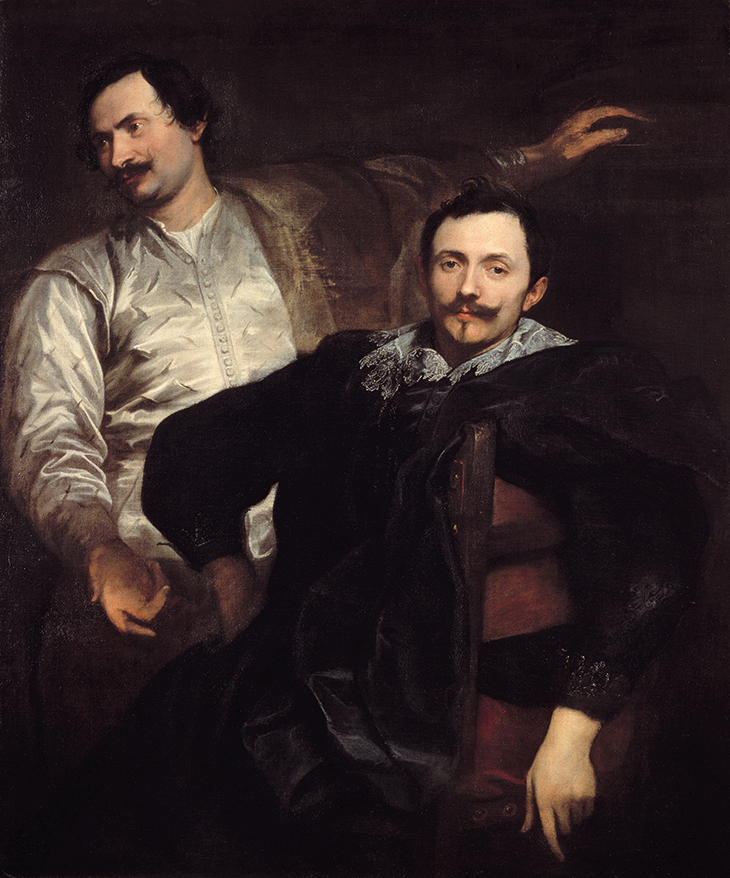
Lucas and Cornelis de Wael (c. 1626), Anthony van Dyck. Capitoline Museums, Rome
As befits a show rooted in material research (recorded in in-depth technical appendices to the lengthy catalogue), ‘Van Dyck’ is a complex, careful exhibition. It begins with his work as a religious painter – first in the close orbit of Rubens up to 1620 and then in the aftermath of his initial encounters with Titian’s paintings in England and Italy – before turning to his emergence as a commercially in-demand portraitist in the late 1620s, and his role as a booster and memorialiser of his fellow artists in his grand collection of portrait etchings Iconography (c. 1632–44). Above all, it promotes the idea of Van Dyck as an artist’s artist. Like Rubens, he was happy to move among Europe’s elites, but profoundly attached to his compeers too.
It is perhaps too easy to project something like fondness on to Van Dyck’s portraits of artists, but after the full-length portraits of unappealing figures like the tax collector Filips Godines and his wife Sebilla vanden Berghe (c. 1630) they come across as profoundly direct, familiar, and engaging. The portrait of the self-assured De Wael brothers (c. 1626) and the domestic portrait pair of Theodoor Rombouts and of his wife Anna Van Thielen with their daughter (c. 1631/32) are as remarkable, in their different ways, as anything Van Dyck painted. And though his gifts as a monumental portraitist make his grander portraits very literally loom large, nowhere is his gift for capturing the personality of a sitter clearer than in the expressive grisaille study of Palamedes Palamedesz undertaken for the Iconography.
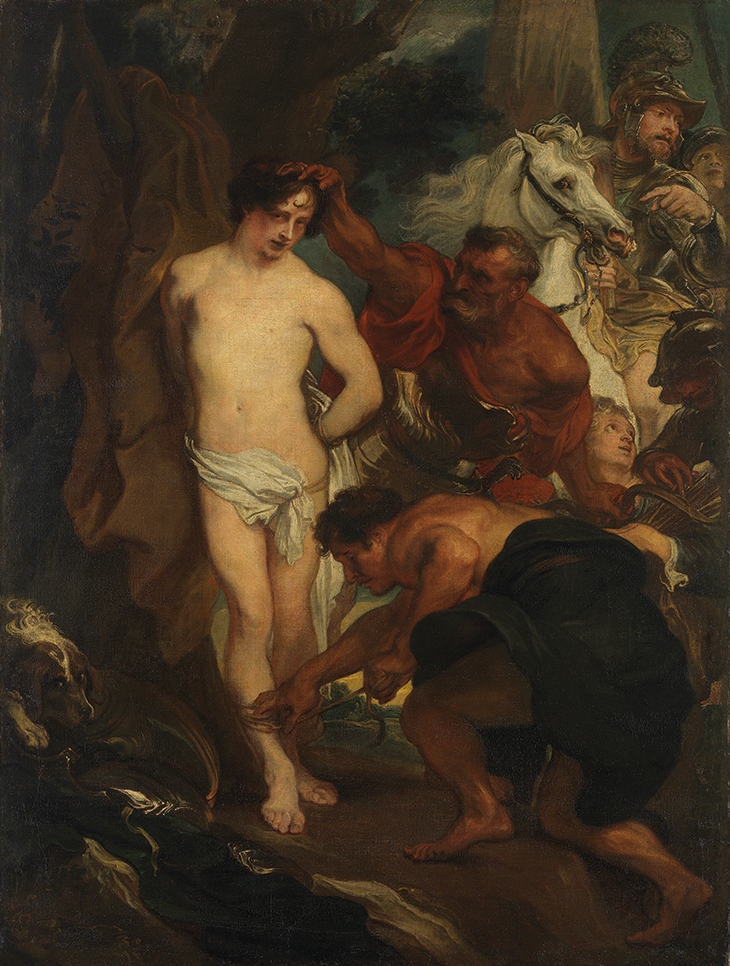
The Martyrdom of St Sebastian (c. 1622/23), Anthony van Dyck. Alte Pinakothek, Munich
For viewers more familiar with the Stuart portraits, work like this will likely show an unfamiliar side to Van Dyck, and one well worth knowing. So too, perhaps, will some of the religious paintings here – including the astonishing, Titianesque Martyrdom of St Sebastian from c. 1622/23, presenting the moments before the martyrdom, the bound Sebastian’s torso still unmarred by arrows, his gaze in the act of being forcibly tilted down from heaven toward the viewer by the strong hand of one of the archers.
For all its visual delights, this exhibition takes a notably more academic approach than the grand quatercentenary shows at the Royal Academy and the Koninklijk Museum in Antwerp in 1999. Here, the eye is less on spectacle than on subtle difference. Relegating developmental narrative to the background, Neumeister has opted instead for close attention to the genesis of individual pieces and groups of paintings. With multiple copies (autograph, workshop and etching) of a good number of the works shown, viewers are invited to participate in an extended game of art-historical spot the difference – aided by screens highlighting Van Dyck’s reuse of stock elements and compositional features drawn from other paintings. It is a mode of exhibiting likely to be more satisfying to specialists than to a general audience – who might understandably wish for a slightly clearer through-line, and less apparent repetition. But it is also one that rewards patient viewing richly.
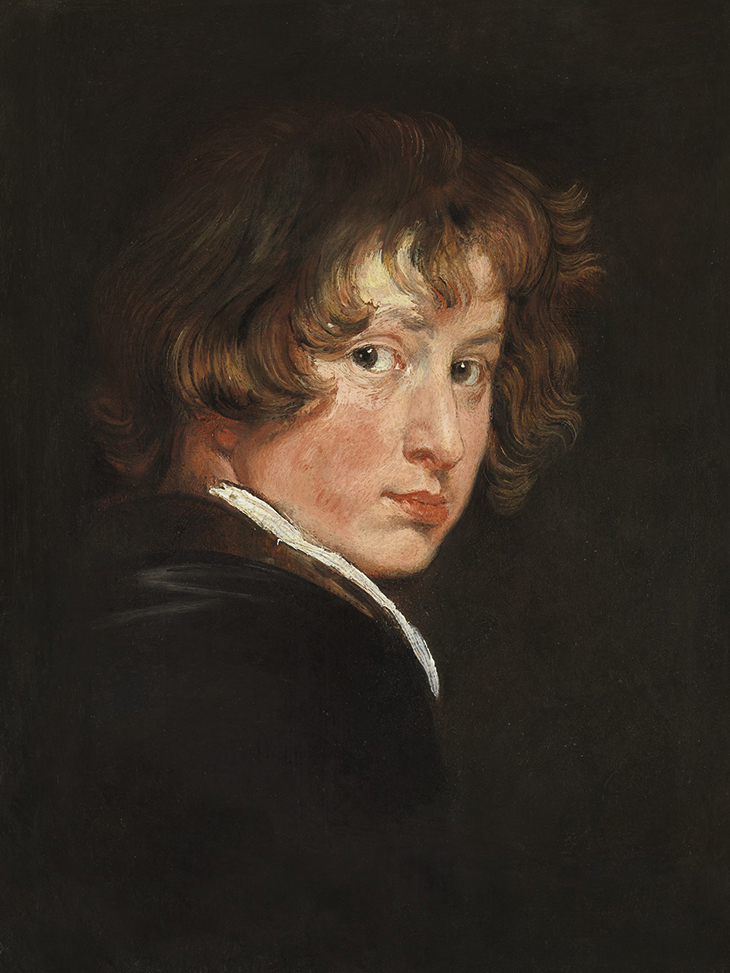
Self-portrait (c. 1615), Anthony van Dyck. Academy of Fine Arts, Picture Gallery, Vienna
‘Van Dyck’ is at the Alte Pinakothek, Munich, until 2 February 2020.
From the December 2019 issue of Apollo. Preview and subscribe here.
Unlimited access from just $16 every 3 months
Subscribe to get unlimited and exclusive access to the top art stories, interviews and exhibition reviews.

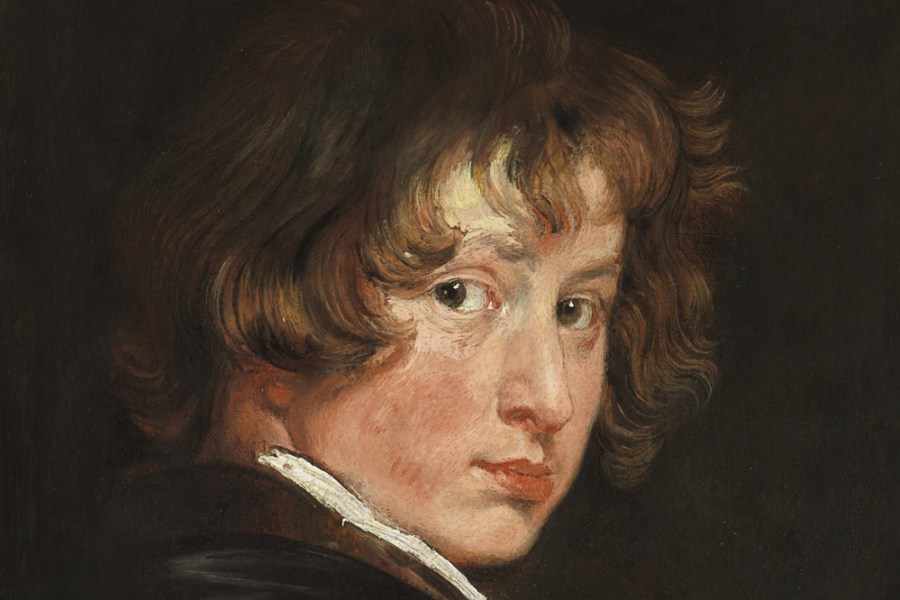
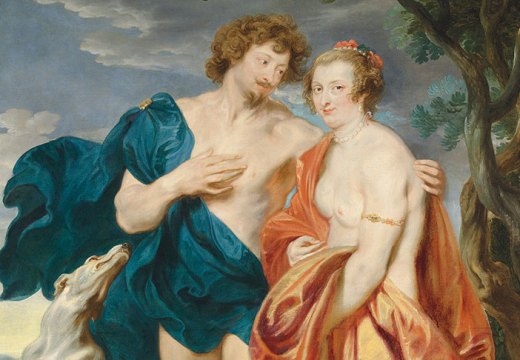
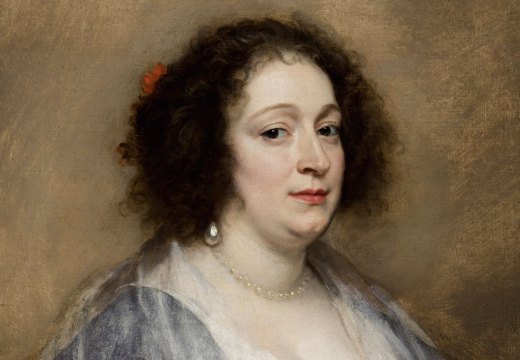
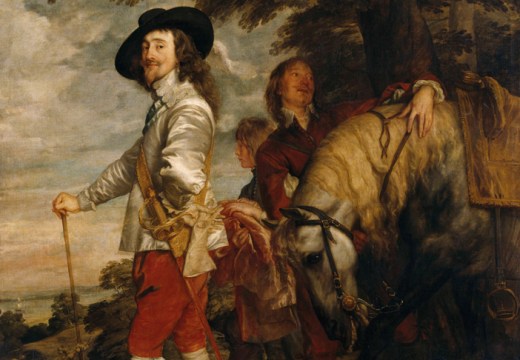









![Masterpiece [Re]discovery 2022. Photo: Ben Fisher Photography, courtesy of Masterpiece London](http://www.apollo-magazine.com/wp-content/uploads/2022/07/MPL2022_4263.jpg)
It’s time for the government of London to return to its rightful home